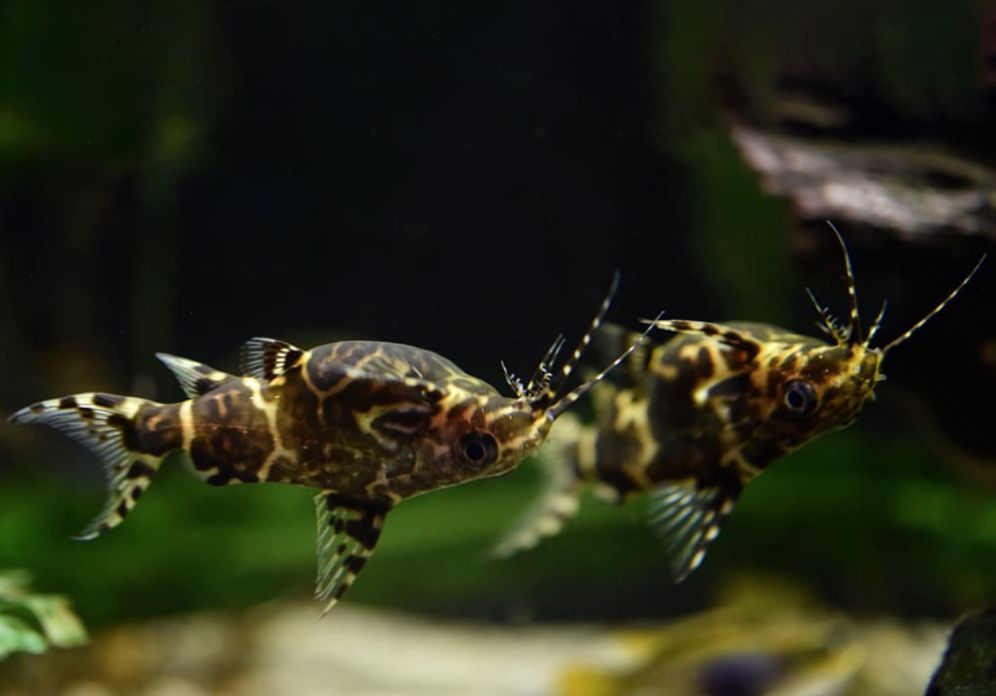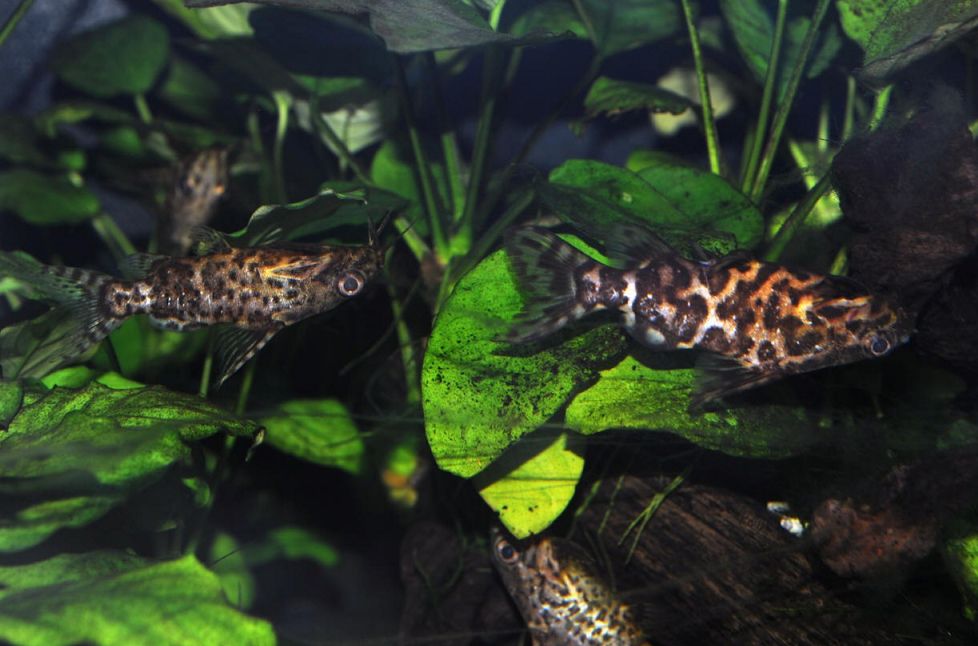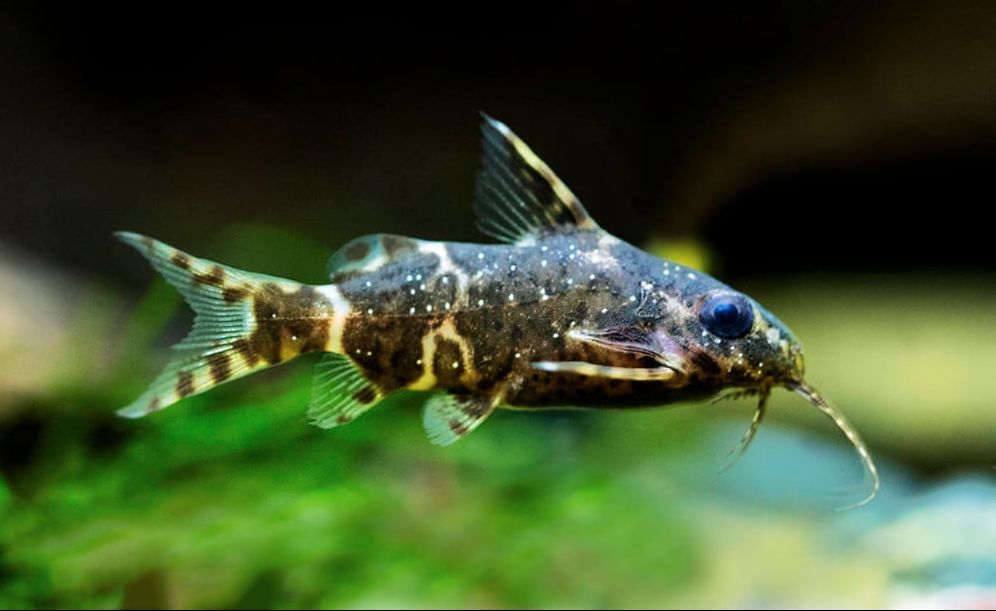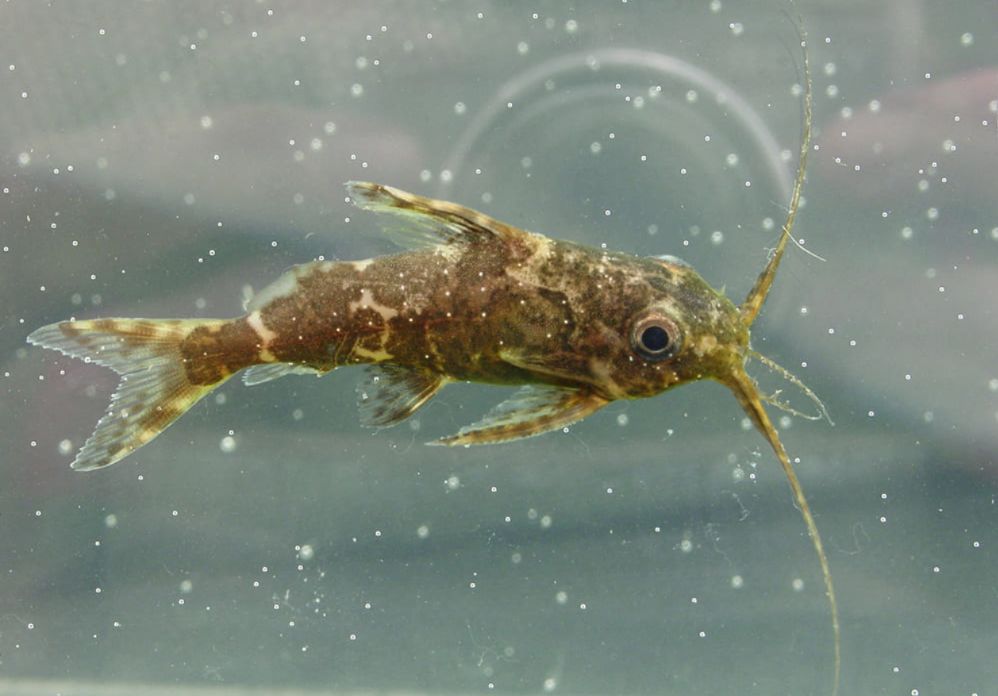The upside down catfish, a member of the Mochokidae family, is known for its unique swimming behavior, spending up to 90% of its time swimming upside-down. This distinctive feature not only aids in its feeding habits but also allows it to navigate its environment more effectively. Native to the freshwater rivers and lakes of Africa, this fish thrives in environments with plenty of cover and hiding spots.

Contents
Habitat in the wild
The upside-down catfish belongs to the Mochokidae family, commonly known as “squeakers.” This family includes small to medium-sized catfish primarily found in Africa, particularly in freshwater habitats such as rivers, streams, and lakes. The upside-down catfish is a notable member of this family, recognized for its unique behavior of swimming upside down and its peaceful nature in aquariums.
This species is commonly found in the midstream areas of the Congo River basin, including Pool Malebo, the Kasai River, and the Ubangi River. It has also been reported in the Kouilou Department of the Republic of the Congo and was artificially introduced to the Philippines.
Feeding primarily at night, the upside-down catfish consumes insects that fall onto the water’s surface, along with crustaceans and plant matter. Its inferior mouth necessitates its upside-down swimming behavior, allowing it to effectively gather food from above. This distinctive feeding strategy is what gives the fish its name.
Description
Lifespan
In well-maintained aquarium conditions, these catfish typically live between 5 to 10 years. To promote their health and longevity, it’s essential to create a suitable environment that closely mimics their natural habitat.
Key care practices include regular water changes, providing a balanced diet rich in both plant matter and protein, and maintaining a stress-free environment. Ensuring optimal water quality and minimizing stress are critical for maximizing the lifespan of upside-down catfish in captivity.
Size
Upside-down catfish are small catfish that typically reach a size of about 3 to 4 inches (7.5 to 10 cm) when fully mature. This compact size makes them ideal for smaller aquariums or community tanks. Their distinctive behavior of swimming upside down, along with their peaceful nature, makes them a favorite among aquarium enthusiasts.
Body
The upside-down catfish has a short, slightly flattened body, with a more pronounced bulge along the back compared to the abdomen. Its large eyes and inferior mouth are equipped with three pairs of barbels, while the tail fin is bilobular. The dorsal fin is triangular, featuring a prominent first ray, and there is a large fatty fin that adds to its distinctive appearance.
In terms of coloration, the body is greige with scattered black-brown spots across its body and fins. Unlike many fish that have a darker back and lighter abdomen for camouflage, the upside-down catfish has a darker abdomen and a lighter back. This unique coloration not only adds to its aesthetic appeal but also plays a role in its natural behavior and interaction within its environment.
Swimming upside-down
The upside-down swimming behavior of the upside-down catfish is a remarkable adaptation that allows it to thrive in its environment. By spending nearly 90% of its time swimming upside down, the catfish can efficiently gather food from the water surface while simultaneously monitoring its surroundings in the lower water layers.
Scientific studies have explored this unique swimming behavior extensively. Young upside-down catfish initially swim with their abdomen down, like most fish, but begin to adopt the upside-down position around two months after birth.
As adults, they prefer to swim in this position in the bottom layers of the water, which allows for faster movement. This upside-down orientation enables them to catch food more effectively from the surface while remaining aware of potential threats below.
Research on the effects of gravity on this species has shown that upside-down catfish possess a remarkable ability to maintain their body position. This suggests that they have a unique mechanism for controlling their orientation, differing from other fish species. Although this swimming style is more energy-consuming, it is offset by the efficiency gained in feeding. This adaptation is likely a result of their nocturnal habits, allowing them to maximize their foraging success while minimizing exposure to predators.
| Characteristic | Description |
|---|---|
| Scientific Name | Synodontis nigriventris |
| Family | Mochokidae (Squeakers or Upside-down Catfish family) |
| Origin | West and Central Africa, mainly in Congo Basin |
| Size | 3 to 4 inches (7.5 to 10 cm) at maturity |
| Lifespan | 5 to 10 years in well-maintained aquarium conditions |
| Behavior | Known for swimming upside down |
| Temperament | Peaceful and suitable for community tanks |
| Diet | Omnivorous, feeds on small invertebrates and plant matter |
| Tank Size | Suitable for smaller aquariums (20 gallons or more) |
| Water Parameters | Prefers clean, well-oxygenated water with stable pH |
| Habitat and Range | Found in slow-moving waters with vegetation |
| Compatibility | Generally compatible with other peaceful fish species |

Difficulties in keeping
The upside-down catfish is generally a peaceful and calm species, making it an excellent addition to community aquariums. However, it can exhibit territorial behavior, particularly towards its own kind, and may consume smaller tank mates that fit in its mouth.
To minimize potential conflicts, it’s essential to provide plenty of hiding spots, such as caves or dense vegetation, which can help create a more harmonious environment. With adequate shelters, the likelihood of aggression decreases significantly.
These catfish are most active at night, when they venture out to swim and search for food.
Keeping in a tank
Catching an upside-down catfish with a dip net can be quite challenging. This fish tends to spread its spiny fins wide, making it easy to get stuck in the net, which complicates safe removal. However, if you gently place the net with the fish into another container, it will often unhook itself and swim away without injury.
To avoid these complications, it’s advisable to use a plastic container for capturing the fish. A smooth-sided container will minimize stress and ensure a safer transfer, making the process easier for both you and the fish.
Tank size
A minimum tank size of 20 to 30 gallons is recommended for a small group of these fish. Given their potential size of 3 to 4 inches (7.5 to 10 cm) and their social nature, providing ample space allows them to swim comfortably and establish territories.
If you’re considering keeping other fish species, assess their size, behavior, and compatibility to avoid overcrowding, which can lead to stress and territorial disputes.
Tank decor
For substrate, avoid sharp objects since these fish lack coarse scales and have sensitive barbels. Sand or small pebbles work well as a bottom substrate. While tank plants can enhance the environment, be cautious with larger fish that may damage delicate plants; opting for robust plants with coarse leaves is advisable.
Incorporating plenty of hiding spots, such as caves, driftwood, and coconut shells, is vital. Upside-down catfish are most active in the evening and at night, often seeking refuge in these shelters during the day. They can be so well hidden that finding them may require a thorough search of the tank. By creating a secure and engaging habitat, you’ll support the health and happiness of your upside-down catfish.
Water parameters
These parameters closely mimic their natural habitat in the Congo Basin and significantly impact their well-being.
For temperature, aim for a range of 75-80°F (24-27°C). This stable temperature is essential for their comfort. The pH level should be slightly acidic to neutral, ideally between 6.5 and 7.5. Maintaining a stable pH is important to avoid fluctuations that can stress the fish.
Ammonia and nitrite levels must remain at zero, as high concentrations of these compounds are toxic. Regular water changes and effective filtration are key to keeping these levels in check. Nitrate levels should be kept low, ideally below 20 ppm, with regular water changes helping to manage them.
Water hardness should be moderate, with a general hardness (GH) of 5-12 dGH and carbonate hardness (KH) of 3-8 dKH. This balance supports the overall health of the fish.
A good quality filter is essential for maintaining water quality; ensure it is appropriately sized for your tank and efficient in both mechanical and biological filtration. Additionally, providing adequate aeration is important, especially in well-stocked tanks, as upside-down catfish thrive in well-oxygenated water.

Diet
Upside-down catfish are omnivorous, meaning they thrive on a diverse diet that includes both animal and plant matter. To promote their health and well-being, it’s important to replicate their natural diet as closely as possible. Here’s a feeding guide for these unique fish:
High-Quality Pellets: Offer high-quality sinking pellets designed specifically for bottom-dwelling fish. Look for options that contain a balanced mix of protein and plant-based ingredients, such as those from reputable brands like Hikari or New Life Spectrum.
Live and Frozen Foods: Include live or frozen foods in their diet, such as brine shrimp, bloodworms, daphnia, and small crustaceans. These foods closely mimic their natural foraging and provide essential nutrients.
Bottom Feeder Tablets: Supplement their diet with specialized bottom feeder tablets that sink and offer a complete nutrition profile. These typically include a combination of animal and plant-based ingredients.
Feeding Frequency: Feed your upside-down catfish small portions multiple times a day. They are generally not aggressive feeders, so it’s essential to ensure the food reaches them before other tank inhabitants can consume it.
Observation: Regularly observe their eating behavior to ensure they are getting enough food without overfeeding. Remove any uneaten food after a few minutes to maintain water quality and prevent pollution.
Upside down catfish Tank mates
Upside-down catfish are among the most peaceful members of their family and can coexist with a variety of non-aggressive species. However, it’s crucial to avoid keeping them with predators or smaller fish that could be seen as potential meals, as these catfish are opportunistic hunters, especially at night.
Here are some suitable tank mates for upside-down catfish:
Medium-Sized Tetras: Species such as glowlight tetras are excellent companions, as they are active mid-level swimmers and will not compete for the same space.
Other Peaceful Bottom Dwellers: Corydoras catfish make great partners, as they share the bottom of the tank and have a similar peaceful temperament.
Gouramis: Many peaceful species, including dwarf gouramis and honey gouramis, can thrive alongside upside-down catfish. These fish typically occupy the upper-middle water column, minimizing competition for territory.
Small Plecos: Consider smaller species like the bristlenose pleco, which can coexist well with upside-down catfish. Ensure that the pleco chosen does not grow too large for your tank.
Peaceful Dwarf Cichlids: Certain dwarf cichlid species, such as German blue rams, can be compatible if the tank is spacious and well-decorated with hiding spots.

Gender differences: male vs female
Distinguishing between male and female upside-down catfish can be challenging, particularly in younger specimens. However, as these fish mature, several subtle differences can help in identifying the sexes, typically observable at around 2 to 3 inches in length.
Size and Body Shape: Mature females may have a slightly rounder and fuller body, while males often appear more streamlined.
Genital Papilla: The genital papilla, located just behind the vent, can provide clues. In mature females, the papilla tends to be rounder and more pronounced, whereas in males, it is smaller and more pointed.
Breeding Behavior: During breeding season, males often display territorial and aggressive behaviors as they compete for female attention. In contrast, females may focus on preparing spawning sites and cleaning surfaces.
Egg-Laying Behavior: Female upside-down catfish typically lay their eggs on the undersides of leaves, logs, or other surfaces. Observing this behavior can indicate the presence of a female.
Breeding
These fish typically reach reproductive maturity at 2 to 3 years of age. Here’s how to create an optimal breeding environment:
Tank Setup: A breeding tank with a minimum capacity of 50 liters is recommended. Incorporate various shelters, such as caves or plants, and include floating plants to provide cover.
Water Parameters: Maintain ideal water conditions to encourage breeding. The temperature should range from 24 to 27°C, with a pH around 7 and hardness at about 10° dH.
Spawning Process: Upside-down catfish rarely spawn in captivity. To trigger spawning, hormone injections are often used. Before breeding, separate one male and one female, feeding them well to promote health. A female can lay around 450 eggs during spawning.
Juvenile Development: The juveniles will start to swim normally by the fourth day of life. They will begin to exhibit their characteristic upside-down swimming behavior around 7 to 8 weeks after hatching.